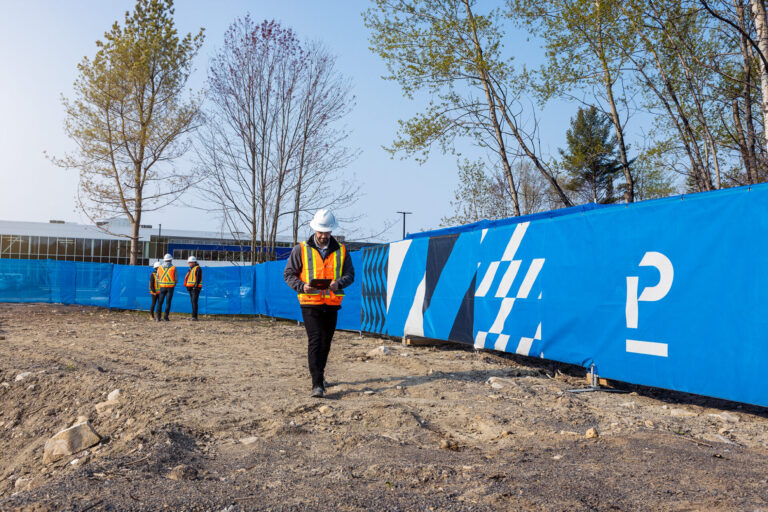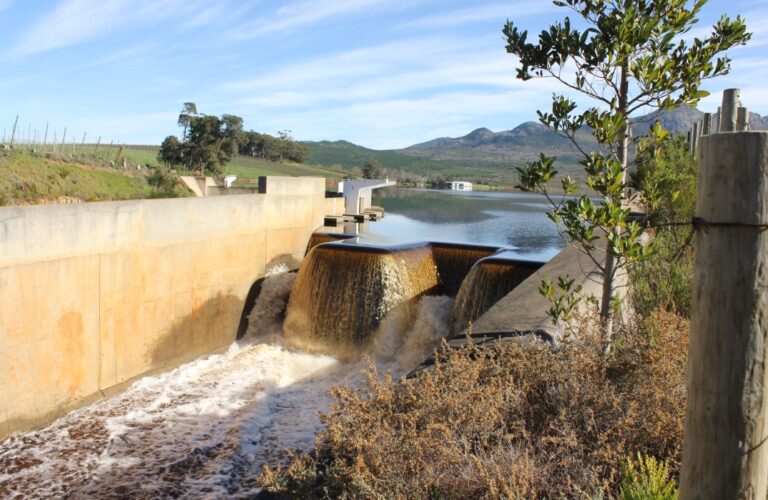There is widespread consensus that Canada’s water systems are in urgent need of investment, replacement, and renewal. For many cities and communities, however, the upfront costs are prohibitive. Public-private partnerships (P3s) are gaining ground as a means for governments to achieve their infrastructure renewal goals; yet when it comes to water, there is still limited adoption of this financing model. Despite perceptual and structural challenges inherent to the sector, P3s can be a viable and desirable model for water and wastewater projects.
A recent example is the Safe Clean Drinking Water Project (SCDWP) in the City of Saint John, New Brunswick, where Port City Water Partners has been awarded a contract to design, build, finance, operate, and maintain (DBFOM) a new water treatment plant. As part of this consortium, ACCIONA will be responsible for the design, construction, and operation of a 75-million-litre-per-day water treatment plant, a 33-million-litre storage tank, and for making improvements to the city’s water reservoirs, transmission system, and pipelines. The completed project will provide services to around 70,000 people.
The most well-publicized feature of the P3 model is the transfer of capital investment obligations from the public to the private sector; governments are then able to pay for the infrastructure over time versus making a single large upfront capital investment. While the cost of private versus public sector capital can be a point of contention among citizens opposed to private sector involvement in water services, the value of the P3 model is derived from the more fundamental principles of efficient risk transfer; integrated development of design, construction, and operational plans; and a more effective matching of asset investment profiles to the natural life cycle and renewal requirements of the asset. This approach is particularly beneficial in the water sector where process design and operational efficiency play a significant role in the total life-cycle cost of the asset.
Life-cycle driven procurement
Under the P3 model, the complete cost of providing, maintaining, and operating the asset is priced over the contract term (typically 30 years). When the asset or utility is handed back to the client at the end of that term, it must meet the condition specifications set out in the contract. The proponents support these delivery and hand-back commitments with financial guarantees. This alignment of performance and financial risk over the contract term ensures the life-cycle cost is optimized.
To achieve this within a competitive procurement process, the P3 proponents consider both the capital investment and operating cost profiles to achieve a low overall cost for the public sector. For water projects, the starting point is process design, selecting a treatment approach that is compatible with the raw water chemistry, meets client requirements, and minimizes operating costs in terms of chemical and power consumption. Design of the plant is also reviewed for efficiency of construction methodologies, ease of physical operations, best use of locally available resources, and optimal balance between capital and maintenance cost requirements.
Harnessing expertise
It’s difficult for every municipality to have the specialized array of expertise needed to manage a complete suite of infrastructure assets—roads, sewers, wastewater, drinking water, garbage collection, recycling, et cetera. Transferring some of this management to the private sector allows municipalities to benefit from the expertise of a private-sector entity that manages a large number of these assets in aggregate. During construction, sufficiently large private entities are also able to leverage their global supply relationships to reduce equipment and component costs.
The P3 model also allows municipalities to harness the wide breadth of experience of global companies who are up to date on the latest proven technologies. ACCIONA, for example, is one of Spain’s largest corporations, operating in infrastructure, energy, water, and services in more than 30 countries. For the design of the Saint John drinking water treatment plant, its team drew on the company’s exposure to different types of plants around the world and its knowledge of how those plants operate over time.
Perceptual challenges
Despite the benefits of P3s, there are some important challenges specific to the water sector. The biggest is public perception as it relates to safety, ownership, and loss of jobs. The change from a publicly managed to a privately managed drinking water facility always engenders concerns about the maintenance of safety standards. It’s important to recognize that the required standards, permits, and procedures apply equally to all operators and systems, whether they are run by a municipality, a private company, or a special-purpose entity like a P3. They allow no margin for reducing quality of service as a way of cutting costs—nor would it be in an operator’s interest to do so. Companies look to deliver high-quality service because this is the foundation for their business growth.
Many people also fear losing control over publicly held assets, particularly when it comes to water and when multinational companies are involved. In this regard, it is important to clarify that P3 concession contracts do not confer ownership rights; rather, they are simply long-term contracts to build, operate, and maintain the assets. The contracts include numerous remedies the clients can implement if the private partner fails to provide services to the standards the client has specified. The contracts also generally prevent the private partner from arbitrarily setting rates or from selling derived services to third parties.
Finally, while multinational companies may bring in their own management models, structures, and capital, they inevitably need to hire local resources to perform the work. For example, the plant operators still need to be certified in their local jurisdiction and, for reasons of practicality, need to live in the local area.
Improving the model
Some of the principle structural challenges to implementing P3s in the water sector are the financial cost required to develop procurement materials and a shortage of in-house expertise needed to manage a P3 competition. In the water sector, assets tend to be smaller—often costing significantly less than $100 million to build, and even less to refit and upgrade. For these smaller asset sizes, it can be a challenge for the P3 model to be cost-effective while bearing the fixed costs of developing the procurement materials and running a detailed procurement process. Fortunately, as more P3 procurements are closed, the model is becoming more clearly established and the upfront cost of running a P3 procurement is being reduced, both for clients and bidders. On this front, industry and clients each have a role to play in working to standardize the process. Further experiments, such as removing the need for committed third-party financing until after a preferred proponent is selected, may lead to further reductions in procurement costs. Working examples of this approach are available for study in the United Kingdom and Australia.
A shortage of in-house expertise is also a material barrier to implementing a P3 procurement. While many provincial governments have acquired expertise with this model, effectively supporting a large number of transactions at a municipal level remains a challenge. At present, there is a strong cadre of consultants who fill this gap and competition for these advisory roles remains high, helping to manage costs. These consultants often have the benefit of working on both the private and public sector sides of transactions and can bring practical and effective solutions to the table to help resolve problematic risk allocations. Over time, and with the support of the existing provincial procurement agencies and departments, it is reasonable to assume the P3 model will become more widely understood and more easily implemented at the municipal level.
There is a huge need for renewal in the water and wastewater sector, but it is a sector that often gets ignored. Safe drinking water is a critical requirement for our society, yet it rarely receives the same level of attention as big highway or transit projects because it is geographically dispersed, composed of smaller-value assets, and delegated to often under-resourced municipalities to manage. P3s can bring valuable expertise and capital to municipalities and communities to help renew this infrastructure.
Darren Sokoloski is the country director and president of ACCIONA Infrastructure Canada Inc.
This article was previously featured in ReNew Canada.









